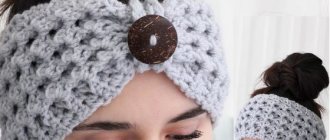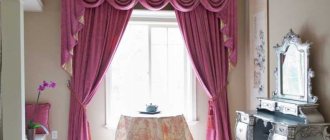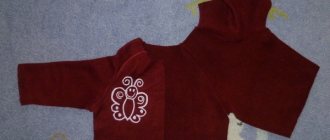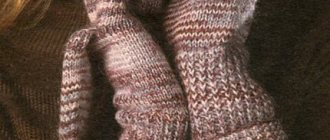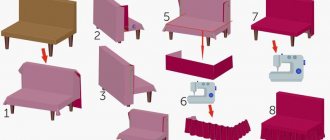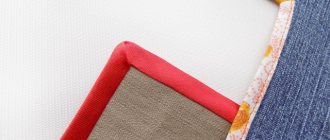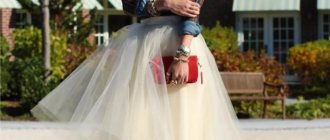Today it is not difficult to design a window opening, as designers offer a wide variety of options, for example, French curtains. Curtains with luxurious wavy folds will not only become a real decoration of the home, but will also demonstrate the good taste of the owner.
History of awning curtains
French curtains originated in the era of King Louis XIV. The Sun King loved luxury. Lush halls, graceful curves of furniture, large windows testified to pomp.
All these delights could not but affect the design of window openings. In ball rooms, windows began to be decorated with curtains made of natural silk. Their main feature was the abundance of lace.
The fashion for awning curtains spread throughout Europe. And now these luxurious curtains are used to decorate both rooms in the Rococo and Baroque styles, as well as rooms in the minimalist and Provence style.
Recommendations for material selection
These luxurious curtains can be made from light, transparent fabrics. In this case, they are usually equipped with curtains or drapes made of heavy and noble materials:
- velvet; jacquard; thick silk.
Sewn from dense, opaque fabric, they perfectly perform a protective function: protect from cold and bright sunlight. But it is better to additionally equip such models with a lifting mechanism so that the illumination of the room can be adjusted.
But the most popular model has become a curtain made of transparent fabrics: artificial or natural light silk, organza or nylon materials. This version of the “Awning” is an elegant and festive alternative to tulle curtains.
Advantages and disadvantages
Popular back in the 18th century. French curtains today do not lose their relevance due to the fact that they have a number of advantages:
- Beautiful appearance. A window opening decorated with “French women” becomes the center of attention of any interior.
- Versatility. They are suitable for any room in the house, as well as restaurants, cafes, concert halls and other public spaces.
- Compatibility with other curtains. To maintain harmony, give preference to smooth curtains.
The only drawback of curtains is that they require a lot of fabric to sew. In addition, they are not easy to care for: washing and ironing will require effort.
Material requirement calculation
If the need for standard curtains is calculated from the length of the cornice and window height, then the amount of material for sewing French curtains is much larger. A significant amount of fabric is used for drapery, and the gathering factor is considered to be no less than 1.75 times the width of the material.
Advice. The length of the cornice, seam allowances of 5 cm should be taken into account, and gathers are formed from the remainder. The finished length of the curtain is multiplied by 2 and seam allowances are added, which are 3 and 5 cm for the top and bottom, respectively.
The main types of French curtains
French products, presented in several types, allow you to choose curtains for most interiors.
Mechanical "awning"
Before sewing French curtains, you should determine whether the window will be closed or whether the curtain will be opened often. In the second case, you need to install a lifting mechanism. Rings are built into the tape, through which a cord is threaded, making the panels movable.
Static curtain
Curtains that completely cover the window are made of translucent fabrics (tulle, organza, veil), which allow the sun's rays to pass through well and do not reduce the illumination of the room. A special feature of this option is the absence of a lifting mechanism.
Lifting
Lifting “awnings” have a special mechanism that regulates the rise and allows you to control the length of the curtain. In this case, you need to choose an appropriate cornice that will sound in unison with the curtains and not go out of context of the interior.
Fixed
These curtains constantly cover the window. They can neither be raised nor lowered, nor can they be moved to the right or left. On such “awnings” the festoons are fixed.
Long
These majestic, luxurious curtains add chic to your interior. Floor-length “French women” are quite popular. They look expensive and graceful.
Short
The length of the product can only cover window openings. Such curtains are chosen when there is a sofa by the window or the window sill turns into a tabletop. Shortened “awnings” that reach the window sill are the best option for the kitchen.
Types of fabrics for French curtains
French curtains are not exactly a budget option for your home or apartment. To sew French curtains, expensive materials are used. To create such beauty you will need:
- tulle;
- fine silk;
- chiffon;
- batiste;
- moire;
- muslin;
- veil;
- organza.
An awning made from such fabrics will look elegant and give your home a more royal look. French curtains made from these types of fabrics are lighter and look more delicate.
Suitable interior styles
French curtains elegantly and at the same time solemnly decorate the windows. Like the Austrian ones, they are ascending, that is, they are collected in the upper part in lush clusters. When lowered, French-style curtains retain beautiful wavy folds along their entire length and add luxury to the room.
Baroque
Baroque in translation means “pompous”, “prone to excess”. Style cannot be recreated without expensive fabrics. Multilayer complex compositions with lambrequins are welcome.
It is better to give preference to rich shades:
- emerald;
- ruby;
- wine;
- rich purple;
- golden or silver.
Provence
Textiles are of great importance in decorating a room in Provence style. The material of the curtains should be natural, calm in color. Natural pastel shades of lavender, olive, and powder are popular. Curtains can be made of unbleached linen, organza, chiffon, chintz.
Classic
The classic style involves the use of expensive textiles - satin, plain or with a barely visible silk pattern.
A combination of white and gilded, pastel tones, and sometimes strict black splashes are welcome in the color palette.
The classic English version involves velvet curtains. “French” voile curtains will fit well into interiors with straight curtains.
Modern
Soft light diffused through thin tulle creates coziness. You can decorate window openings by combining curtains with roller blinds or Roman blinds.
History of appearance
It is believed that the description of the first curtains with scalloped folds laid along the entire length appeared in the 17th century in France during the reign of Louis XIV - the Sun King during the heyday of Baroque and Classicism. Who exactly came up with the idea of decorating windows not with straight lines, but with canvases assembled along the entire length in cascading rows of festoons, history is silent. But with the light hand of an unknown designer, such window curtains quickly gained popularity among the nobility and became the personification of wealth and luxury. They were sewn from natural Chinese silk and decorated with fringe and tassels.
For “French curtains,” fabric is required several times more than for straight curtains; in addition, numerous scalloped folds do not look good on cheap textiles and small windows. Therefore, it is quite understandable that they were inaccessible to ordinary people, and the people called them “marquises” - by analogy with one of the highest European noble titles.
Officially, an “awning” is a fabric canopy for protection from the sun and rain.
The second unofficial name has been preserved behind the curtains of aristocrats to this day and leads to confusion of concepts. The fact is that officially awnings are fabric awnings over windows used to create a comfortable shaded area on the street in front of houses, cafes and restaurants.
In their original form, awning curtains are stationary (they do not move apart, do not rise, but simply hang motionless to the floor), look very solemn and pompous and look best in spacious rooms with high ceilings. Therefore, nowadays they are used mainly on stage, in concert and banquet halls, restaurants, and spacious halls of country houses.
For owners of average apartments, options for French curtains have appeared, sometimes they are called French blinds, adapted to modern realities:
- Firstly, the length of the curtains has been significantly shortened and, for example, in the kitchen you can hang a French curtain up to the windowsill.
- Secondly, in addition to natural silk, today there are many high-quality, but not so expensive fabrics on which scalloped folds also look attractive: organza, chiffon, cambric, moire.
- Thirdly, cornices for French curtains began to be equipped with lifting mechanisms, both manually and electrically controlled, which can be mounted on casement windows, which significantly increased their functionality and expanded their scope of application.
Suitable colors for French style curtains
When choosing the color of the curtains, you need to decide on the purpose of the curtains. Dark colors are only suitable for large rooms. Curtains in pastel colors will decorate the dining room and bathroom.
It is important that the colors of French products match the decoration of the walls.
You should not select textile designs that exactly match the color of the wallpaper.
Red
In a minimalist style, red curtains create a bright accent. The rich color of passion will add splendor to the interior. The feeling is enhanced when using satin, brocade, and velvet.
Beige
The beige color of the textile will create a feeling of warmth and tranquility. If you choose a relief material, it will add solemnity to the room. Beige curtains do not completely absorb light, so when the sun's rays enter the room, they will fill it with warmth and delicacy.
Violet
Purple drapes are associated with sophistication and elegance. Shades of lilac in textile designs will transform even the simplest kitchen. Purple curtains in the office will awaken creativity.
White
The color of purity in the design of windows makes the room lighter and visually larger. Long French curtains can create the appearance of a high ceiling and expand the space. The neutrality of white goes well with any shade.
Pink
Pink brings a feeling of happiness, optimism, and joy to the interior. The accent in the living room can be fuchsia colored panels. You can mix pink and powder, combining them with peach wallpaper. The result will be a unique composition.
Green
In the color spectrum, green is between yellow and blue, and therefore belongs to the warm and cold range. Warm gives energy and gives inspiration, while cold soothes.
Green “French” colors in the kitchen will create an atmosphere of peace, light shades in a small living room will visually increase the area, and rich emerald shades will add luxury.
Modern elegance
Decorating windows with “awnings” (aka French-style curtains) is becoming an increasingly popular trend in the interior. They are hung not only in the living room and bedroom, but also decorate the windows of kitchens and even loggias.
If you are just planning a renovation or changing the image of your apartment, and you are afraid that this option is too pretentious for you, then look at the photos of French curtains in different designs, and you will see that they fit perfectly even with a simple design.
Awning curtain design
If you choose the right design, you can make the windows in each room unique.
Flowers and vegetation
A colorful floral print will give the interior a special mood and fill the room with energy. Such curtains will look good in rooms filled with sun.
Monograms
This ornament will satisfy even the most refined taste. With the help of monograms, a simple room turns into a royal apartment.
Awnings
The length of the awning can be different - the curtain either covers only the window opening or goes down to the floor. French curtains will look good with lambrequins.
Such curtains are well suited for classic interiors and will add an additional touch of luxury to them.
“Awnings” will decorate ceremonial and banquet rooms. However, now you can buy French curtains of various designs. Among the wide selection, it’s easy to find curtains that will look good both in the kitchen and in the hallways.
Most often you can find French curtains made of light fabrics.
In this case, light, delicate colors are predominantly used. The fabric must be elastic - only in this case will the folds be kept even. Classic “awnings” are sewn from dense, heavy silk.
Tips for choosing textiles
To create volume and graceful flounces, light fabrics that respond well to multi-level drapery are used. The material should easily fit into smooth curves and form beautiful and lush festoons.
Veil
The weightless veil falls in beautiful waves, which allows you to create a luxurious curtain design. Often the exquisite texture is complemented by elegant designs, interesting embroidery, and printed patterns.
Organza
Airy, lightweight fabric, yet stiff enough to reliably hold the shape of the folds. It does not wrinkle and transmits light perfectly. In appearance, organza can be matte, shiny, printed, or smoothly dyed.
Silk
Soft, durable fabric with a glossy sheen. “Awnings” made of silk shimmer beautifully in the light.
Velvet
This fabric is aesthetic, attractive, looks expensive, and has a unique depth of color. The material does not cause allergies, holds its shape well and does not deform.
Satin fabric
Satin has an elastic and beautiful shiny surface, high strength. The fabric is flexible and drapes easily. The satin can be plain or have patterns on the surface.
Linen
Fabric made from natural fibers creates a cozy atmosphere in the room. Such curtains are called “natural air conditioning”. In addition, they do not accumulate static electricity. In summer, such curtains give the room coolness, and in winter - warmth.
Photos of French curtains
French curtains will give your home the spirit of true aristocracy.
- Date: 03/10/2015 Comments: Rating: 15
A French curtain, otherwise known as an awning, is a curtain made from one single piece of fabric, which is gathered into soft horizontal folds, forming lush festoons (Fig.
1). Several rows of such drapery give the panel an exquisite relief, reminiscent of ancient castles and magnificent dresses of court ladies. They will be most appropriate in a classic or baroque interior in combination with antique furniture.
Figure 1. French curtains will fit perfectly into the classic interior of a spacious room furnished with expensive antique furniture.
It is quite difficult to sew such curtains with your own hands due to the large size of the workpiece. The sewing process itself is simple even for beginners, and there are no complex shaped parts in the cut.
Sewing French curtains with your own hands - step-by-step instructions
Sewing awning curtains is not difficult, but there are many nuances, for example, the correct proportion of scallops.
Calculation of the number of festoons
For the calculation you need to take into account:
- textile texture;
- window size.
For tall windows, the step length of the scallop is 25 cm. If the openings are wide, then the step width is 50 cm. The thinner the material, the smaller the fold size should be.
Calculation of the amount of material needed
To get luxurious waves, the fabric should be 3 times the size of the finished product in height and 2 times larger in width. Good “awnings” are distinguished by an abundance of ruffles. A master class on sewing medium-length French curtains begins with measuring the window. To calculate fabric consumption, the resulting width is multiplied by 1.5, and the length by 2.
What do you need to buy besides fabric?
To sew a curtain, you need to purchase:
- textile;
- special cord;
- braid with rings;
- threads
How to prepare fabric for cutting
The fabric must be decatified. In order for the material to shrink, it must be wet-heat treated. After sewing, the curtain will be difficult to iron, so the fabric should be ironed efficiently.
Cutting the material
They make a pattern of individual canvases. Cut out the required number of strips. Seam allowances of 4 cm are left on the sides and bottom, and 2 cm on the top. To determine the width, use the length of the cornice as a guide.
To calculate the distance between scallops, you need to divide the width of the canvas by the number of scallops.
Carrying out tailoring
Both panels are sewn together using a French twill or linen seam so that the first panel protrudes 4 cm from the second. The seam size is the width of the sewing machine foot.
After stitching the seam, turn the product over, fold it under the first seam twice and make another stitch. This way you get a drawstring for the cord. The following panels are attached in the same way.
The side seams are laid in the direction on which there are 2 lines (this is the wrong side). After all the seams are stitched, they are ironed. The cords are threaded through the drawstring and secured at the top using a sewing machine. The curtain is carefully pulled together. Velcro tape is sewn at the top, through which the drawstring is pulled and the product is attached to the cornice.
Uncover
One of the most important points when cutting is to prevent the fabric from skewing. In order to ensure this, it is necessary to lay out the fabric on a large, flat, horizontal surface. Next, the cutting of the curtain is as follows:
- drawing a rectangle with the required parameters, taking into account all coefficients and leaving allowances on each side of at least 5 cm;
- marking the width of the fold step, which is best done by pulling the thread from the fabric, which ensures the appearance of a visible stripe on the fabric. This strip will subsequently serve as a guide for stitching the braid.
Some finishing features
Despite the fact that French curtains are self-sufficient in themselves, they can be decorated with lambrequins, fringe, ribbons, and bows.
Lambrequin
You can decorate the product using a lambrequin in a contrasting shade or to match the product. It can be straight or curly. The bottom edge is often decorated with braid or fringe.
Tassels
Tassels can be used to decorate the lower edge of curtains, lambrequins - products made from dense fabrics. Waves with tassels look unusual and stylish.
Fringe
Beautiful fringe highlights the colors of the fabric. With its help you can fix the drapery. Sometimes fringe helps hide uneven seams. Country-style curtains can be decorated with cotton lace. Such curtains attract attention and are appropriate in any room.
Bugle beads
Bugle beads for curtains are a presentable and stylish solution. With its help you can decorate a lambrequin or flounces on French curtains.
Recommendations for the use and photos of French curtains in the interior of different rooms
The rooms in which “awnings” are used may have different purposes. It is not recommended to use them only in very small rooms.
Living room or hall
This window decoration will add a touch of solemnity and luxury to the interior.
Bedroom
A bedroom decorated with French curtains with an intricate pattern will look relaxed and romantic.
This room is a place of solitude where an intimate atmosphere reigns.
Exquisite window decoration with “awnings” with an abundance of folds and ruffles will add another piece of French chic to the interior. A good option would be organza curtains in delicate light colors.
In the kitchen
You can make your kitchen unusual by hanging French curtains. It is better to use the length up to half the window. Coats, translucent material in light colors are suitable. “Awnings” made of light fabric with a delicate pattern, decorated with a bow, will add a touch of coquetry to the kitchen space.
Children's
By hanging French curtains in the nursery, you can create an atmosphere of magic and fairy tales. It is appropriate to use them in a girls' room.
Balcony
Today, the balcony is not just a storage room. Often it is a continuation of the living room, kitchen, or nursery. To maintain coziness, you can hang short French-style curtains here. To create a unified interior, the color of the curtains must match the textile structure of the room.
Cabinet
Floor-length French curtains will make the ceilings higher and create space. An elegant pattern on the curtains can create an atmosphere of respectability and solidity in the office.
On the stairs
French curtains with lambrequins will look especially beautiful on narrow and high windows. If width allows, you can hang an “awning” with straight curtains. For multi-level windows, “French” tulle is suitable.
Making French curtains, materials
Awnings are sewn from light fabrics - silk, cambric, organza, veil. Classic French curtains are made of thick silk, pleasant to the touch. It can be smooth or have a damask pattern. This texture of the fabric allows you to form beautiful, smooth folds from it.
Of the synthetic materials used for sewing awnings, polyester is used. In terms of performance, it is superior to silk, but is more practical and costs less.
Options for combining with other types of curtains
The awning curtain is universal and harmonizes perfectly with other types of curtains.
Curtains
Light French curtains made of transparent fabric look good in combination with drapes. It is recommended that the latter be straight and made of thick fabric.
Roller blinds
Roller blinds also harmonize with the “French curtains”. Moreover, curtains perfectly decorate the room, and roller curtains serve as protection from bright sunlight and prying human eyes.
Valentina, 46 years old, Tambov
We recently bought French curtains quite spontaneously and really liked their luxurious look. Now I doubt the correctness of my choice. The curtains are of course very beautiful, but they won’t fit into every interior; they look very foreign to me.
French curtains are a very bright interior detail. They are unlikely to look good in a modern room design, but they are ideal for interiors in a classic style.
Examples of design of non-standard windows
Increasingly, non-standard window openings are being used in apartments and houses, but this is not a reason to refuse luxurious French curtains.
Bay window
Large bay windows are a popular architectural solution. To decorate them, rich and saturated colors are used. On bay windows in the kitchen, you can use an “awning” curtain up to the window sill in combination with a Roman one.
Window with balcony door
When designing a window, you need to take into account the functionality of the balcony and the necessary illumination of the room. For a classic-style living room, for example, light curtain fabric with many transverse folds and plain tulle are used.
Arch
Arched windows give the interior an expensive effect and are associated with royal chambers. Arched windows are true luxury, which can be emphasized with awning curtains.
Caring for French curtains
As with all textiles, the main problem for curtains is dust. The abundance of folds makes it difficult to care for. If the “awnings” are made of dense fabrics, then you can use a vacuum cleaner and clean at the lowest speed.
Stains and partial dirt can be removed with a sponge soaked in soapy water. To maintain its shape and original beauty, it is better to have the textile structure dry cleaned.
The curtain made of light translucent material is washable. To do this, set the machine to a delicate or gentle mode. To smooth out the drapery, you should use a steam generator.
